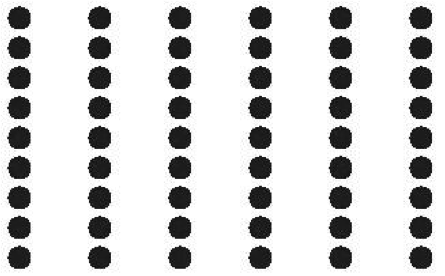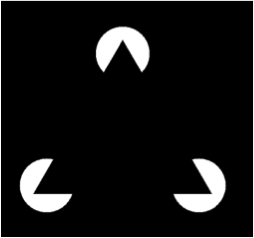Chapter 1. Gestalt Perception
1.1 Introduction
Gestalt Perception
How fast are you at discriminating shapes? In this experiment you will be briefly shown an initial shape and then two shapes. Your task is to determine, as quickly but as accurately as you can, if the two shapes are the same or different.
1.2 Experiment Setup

1.3 Instructions
Instructions
You will need to press the space bar to begin the experiment. At the beginning of each trial, a fixation mark will appear. Keep your eyes positioned on this mark as much as possible. A figure will flash around the fixation mark. This is called the prime stimulus. Then, following a brief blank period, when just the fixation mark is present, two shapes will be presented. One shape will be on either side of the fixation mark. The shapes will be either squares or triangles. Your task is to determine if the two shapes are the same or different from each other. You may respond by using the buttons below the images or the keyboard.
Keyboard Responses:
| Key | What Response Means |
|---|---|
| f | same |
| j | different |
1.4 Experiment
Begin Experiment

1.5 Results
Results

1.6 Debriefing
Debriefing
Look at the following figure. What do you see?

Most people report seeing columns, but it is really just a collection of dots. The perception of columns comes from the fact that the dots are closer to each other vertically than they are horizontally. This finding is just one of the interesting features about perception that was discovered and systematized by the Gestalt psychologists early in the 20th century. Their findings are known as the Gestalt Laws of perception. We group together disconnected bits of a scene into a more complete perception. This is quite useful in the real world because one object often overlaps part of another object, so we need to be able to group these unconnected parts of objects together.
One classic illusion -- the Kanizsa Illusory Contours -- is repeated below from the results page.

Most people see a triangle overlapping three circles. Of course, there is no triangle, there are just slices out of the three circles. These circles are often called Pac-Man figures because of their similarity to the character in the classic video game of the same name. In the current experiment, these illusory figures were used to prime how well you discriminated among pairs of real figures. In priming, a stimulus is presented prior to the stimuli you have to respond to. A prime is a way to initiate a concept in memory. If the prime works, it helps you respond to the correct stimuli. Prime stimuli only work if they are similar to the actual stimulus, either perceptually or conceptually. So the finding that illusory shapes prime real shapes suggests that these illusory figures have to be similar perceptually to the real stimuli. In other words, illusory shapes are treated in our brain as real shapes. It is not the mere grouping of elements that is being described by these Gestalt laws, but how we actually perceive objects.
References:
Barlasov-loffe, A., & Hochstein, S. (2009). Illusory-contour figures prime matching of real shapes. Perception, 38(8), 1118-1131.
HaIko, M. A., Mingolia, E., & Somers, D. C. (2008). Multiple mechanisms of illusory contour perception. Journal of Vision, 8(11), 1-17.
Kanizsa, G. (1979). Organization in Vision: Essays on Gestalt Perception. New York: Praeger.
1.7 Quiz
Quiz